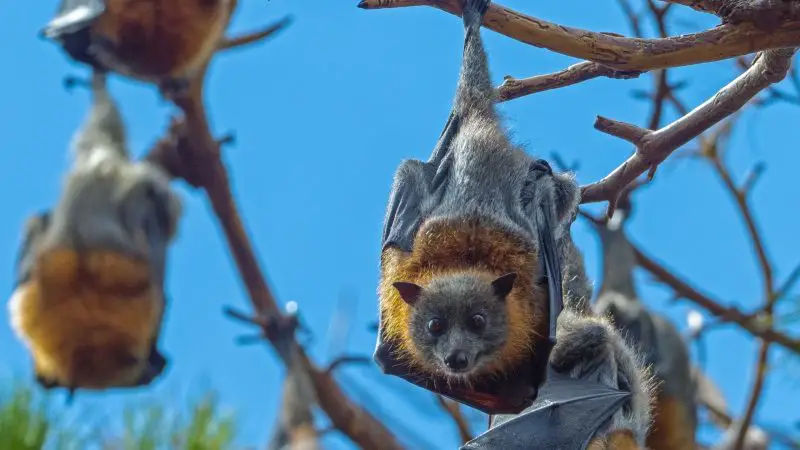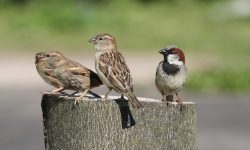Bats are mysterious creatures of the night, often misunderstood yet vital to many ecosystems. Whether you’ve seen them fluttering at twilight or heard myths about their nocturnal habits, one question may have crossed your mind: what is a group of bats called? The answer might surprise you, and the deeper you dive into the world of bats, the more fascinating it becomes.
In this article, we explore the official term for a group of bats, the science behind their social behavior, and the role these groups play in the natural world.
The Collective Noun for Bats

What Is the Official Term for a Group of Bats?
A group of bats is most commonly called a “cauldron” when they are in flight. However, depending on the context in which the bats are gathered, they may also be referred to as a “camp”, “cloud”, or “colony”. These collective nouns vary depending on location, activity, and even historical use.
For example, if bats are flying together in the evening sky, “cauldron” is typically the poetic and most descriptive term. When they are roosting in caves, barns, or trees, the term “colony” is more often used.
Variations in Terminology
While “cauldron” is a more whimsical and lesser-known term, “colony” remains the standard scientific term used in academic literature and ecological studies. Bird watchers, biologists, and bat enthusiasts alike tend to use “colony” when discussing bat populations in a roosting context.
On the other hand, “camp” is a term frequently used in places like Australia and Southeast Asia, especially when referring to fruit bats roosting in trees. “Cloud” is another less common term but is sometimes used to describe bats swarming in large numbers.
Why Do Bats Live in Groups?
Social Behavior and Evolutionary Advantage
Bats are highly social animals. Living in groups gives them several survival advantages. By roosting in colonies, bats can regulate their body temperature more efficiently, a phenomenon known as social thermoregulation. This is especially important in colder climates where warmth can mean the difference between survival and death.
Living in a group also enhances protection against predators. Bats that roost together are less likely to be targeted by predators, thanks to the safety-in-numbers principle. The presence of many bats can also confuse and deter would-be attackers.
Communication and Learning
Bats in colonies engage in complex vocalizations that allow them to communicate. Some bat species even have distinct dialects depending on the colony. Mothers can recognize their pups by their unique calls, and young bats learn important survival skills by observing older members of the colony.
There is also evidence that bats learn from each other. For instance, younger bats may learn about good foraging areas by following older, more experienced bats.
Types of Bat Colonies
Maternity Colonies
A maternity colony consists mainly of female bats and their young. These colonies form in the spring and summer and are essential for raising pups. Maternity colonies are often located in warm, secure places such as attics, hollow trees, or caves where the environment is stable and free from predators.
Females usually give birth to a single pup per year, and these colonies can grow to hundreds or even thousands of individuals. The pups cling to their mothers or hang together in tightly packed groups while the mothers go out to forage.
Bachelor Colonies
Some species form bachelor colonies, made up exclusively of males. These colonies are typically smaller than maternity colonies and are formed when males roost together during the breeding off-season.
Bachelor colonies tend to be less stable than maternity colonies and may frequently change roosting sites. However, they play a crucial role in the population dynamics and mating strategies of bats.
Mixed Colonies
In some cases, bats form mixed colonies that include both males and females, as well as young. These are more common in tropical regions where the breeding season is less restricted by climate. Mixed colonies may exhibit more complex social structures and hierarchical behaviors.
How Big Can a Bat Colony Get?
Record-Breaking Colonies
Bat colonies can vary widely in size, from a few dozen individuals to millions of bats. One of the most famous and largest bat colonies is located at Bracken Cave in Texas, USA. It is home to an estimated 20 million Mexican free-tailed bats, making it the largest known bat colony in the world.
This massive colony plays an essential role in agriculture by consuming vast quantities of crop-destroying insects. It’s estimated that bats from this colony can eat up to 200 tons of insects in a single night!
Small Colonies and Urban Bats
In more urban or temperate areas, bat colonies are usually smaller. Some species, like the little brown bat, may form colonies of a few hundred individuals in attics, barns, or under bridges.
Urban colonies often face threats from human development, but they also show how adaptable bats are. Many bats thrive in man-made structures, provided they are not disturbed or removed.
Roosting Sites and Habitats
Natural Roosts
In the wild, bats roost in a variety of natural habitats. These include caves, hollow trees, rock crevices, and even under bark. The choice of roost is influenced by factors like temperature, humidity, safety from predators, and proximity to food sources.
Cave-dwelling bats often form larger colonies due to the space and shelter provided. The darkness and stable climate inside caves are ideal for roosting and raising young.
Urban and Man-Made Roosts
As natural habitats shrink due to deforestation and urbanization, bats have adapted to using buildings, bridges, and old mines as roosting sites. In many cases, abandoned structures provide the same benefits as natural roosts.
Conservation efforts often involve installing bat boxes, which mimic natural roosts and provide safe spaces for bats in urban and suburban environments. These bat boxes are especially helpful for maternity colonies.
Importance of Bat Colonies in Ecosystems
Pest Control
Bat colonies are incredibly valuable for natural insect control. Insectivorous bats feed on mosquitoes, moths, beetles, and other pests. A single bat can eat up to 1,000 insects per hour, and large colonies collectively protect crops and human populations from insect-borne diseases.
Farmers often rely on bat populations to reduce their need for pesticides. This makes bats an essential part of sustainable agriculture and natural pest management.
Pollination and Seed Dispersal
Not all bats eat insects. Some are frugivorous or nectarivorous, meaning they eat fruit or drink nectar. These bats play a significant role in pollinating flowers and dispersing seeds, especially in tropical and subtropical ecosystems.
Plants like bananas, mangoes, guavas, and agave (used to make tequila) depend on bats for pollination. Without these flying mammals, many important plant species would struggle to reproduce.
Threats to Bat Colonies
Habitat Destruction
Deforestation, cave disturbance, and urban sprawl are significant threats to bat colonies. When roosting sites are destroyed, entire colonies can be wiped out. Because bats are slow breeders—many species have only one pup per year—recovery from population losses can take years.
White-Nose Syndrome
In North America, one of the most devastating threats to bat colonies is white-nose syndrome, a fungal disease caused by Pseudogymnoascus destructans. It has killed millions of bats since its discovery and continues to spread.
White-nose syndrome affects hibernating bats, causing them to wake more frequently during winter and burn through their fat reserves before spring. Conservation groups and researchers are working hard to find solutions to this deadly disease.
Human Misconceptions and Persecution
Misunderstandings about bats—fueled by myths, horror stories, and fear—have led to the destruction of colonies by people who believe bats are dangerous or spread disease. In reality, bats are shy and rarely pose a threat to humans.
Educational outreach is vital in changing public perception. Bats should be appreciated for their ecological importance and protected from unnecessary harm.
Conservation Efforts for Bat Colonies
Bat Sanctuaries and Protected Areas
Around the world, conservationists have established bat sanctuaries to protect critical roosting habitats. These areas often include caves, forests, and wetlands that are crucial to the survival of bat species.
Some countries have legal protections in place that prevent the destruction of bat roosts, especially during breeding seasons. Eco-tourism programs centered around bat watching have also helped raise awareness and funds for conservation.
Citizen Science and Bat Monitoring
Citizen science initiatives encourage people to monitor local bat populations using bat detectors and roost surveys. Data from these efforts helps researchers track population changes and identify conservation priorities.
Programs like Bat Conservation International and local wildlife groups often provide resources and training for volunteers to contribute to bat conservation efforts.
Building Bat Boxes
One of the easiest ways to help bats is by installing bat boxes in your backyard, garden, or farm. These wooden structures offer safe, dry roosting spots for small colonies, especially in areas where natural habitats are limited.
Bat boxes are particularly useful for supporting maternity colonies, helping ensure that mothers have a safe space to raise their young.
Fascinating Facts About Bat Colonies
Bats Are the Only Flying Mammals
Bats belong to the order Chiroptera, and they are the only mammals capable of sustained flight. Their wings are made of skin stretched over elongated finger bones, allowing them remarkable agility and speed.
Some Colonies Migrate Seasonally
Just like birds, some bat species migrate between summer and winter roosts. Colonies may travel hundreds of miles to find suitable hibernation or breeding grounds.
Bats Use Echolocation
Many bat species rely on echolocation to navigate in the dark. By emitting high-frequency sounds and listening to the echoes, bats can locate prey and avoid obstacles—even in complete darkness.
Conclusion: Why the “Cauldron” Is More Than Just a Word
Now that you know a group of bats can be called a cauldron, colony, camp, or cloud, you’ve gained more than just a vocabulary upgrade—you’ve entered the rich and often misunderstood world of bats.
These remarkable creatures form highly organized social units that contribute massively to our ecosystems. Whether it’s devouring crop pests or pollinating plants, bat colonies are indispensable allies in nature.
So next time you see a swirl of wings at dusk, you’ll know you’re witnessing a cauldron of bats in flight—an ancient and beautiful phenomenon that deserves our respect and protection.






